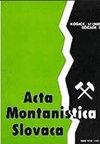Risk Management in the Development of Drilling Technological Projects
IF 1.4
4区 地球科学
Q2 GEOSCIENCES, MULTIDISCIPLINARY
引用次数: 0
Abstract
Recovery of hydrocarbon is an important aspect of the O&G industry, which has gained much importance in recent times. It can be achieved through a set of activities and decisions in which successfully drilling the oil/gas deposits is very important. Drilling is a critical step in the exploration process, and it has a high level of risk in terms of cost, timeline, safety, and project completion. The study focuses on identifying, evaluating and estimating unforeseen events that may occur during the drilling projects. The methodology acquired for this paper includes a thorough focus on the literature review which has been done. It consists of a model/theory related to risk management and the concept of risk management processes. A comprehensive project life cycle model with six stages has correlated with the drilling phases. Detailed risk management has been practised for an integrated risk portfolio for the development project. A generalized risk identification approach has been utilized to recognize possible threats. A qualitative risk assessment has been executed for the findings. Impact and probability benchmarks are categorized per the past historical well's performances and published data. Considering the importance of risk management for said projects, the study focused on the literature review that highlights the processes, procedures, and models for drilling risk management. Risks have been recognized through a rigorous and comprehensive risk identification process and have been evaluated with the qualitative risk assessment approach. The risk register for development drilling projects has been developed along with the risk matrix as per the defined criteria of risk impact and probability for drilling. Furthermore, a detailed risk breakdown structure has been formulated according to the general area categorization to enlighten the risks focused on each area of interest. Overall, the study will provide a value-added and detailed risk management approach for new ventures, which may be planned with the implementation of comprehensive drilling risks management.钻井技术项目开发中的风险管理
碳氢化合物的回收是油气工业的一个重要方面,近年来得到了很大的重视。它可以通过一系列活动和决策来实现,在这些活动和决策中,成功钻探石油/天然气矿床非常重要。钻井是勘探过程中的关键一步,在成本、时间、安全和项目完成方面具有很高的风险。该研究的重点是识别、评估和估计钻井项目期间可能发生的不可预见事件。为本文获得的方法包括对已经完成的文献综述的彻底关注。它由与风险管理相关的模型/理论和风险管理过程的概念组成。一个包含六个阶段的综合项目生命周期模型与钻井阶段相关。对开发项目的综合风险组合进行了详细的风险管理。采用了一种通用的风险识别方法来识别可能的威胁。已对调查结果进行了定性风险评估。影响和概率基准是根据过去历史油井的性能和公布的数据进行分类的。考虑到风险管理对上述项目的重要性,本研究侧重于文献综述,重点介绍了钻井风险管理的流程、程序和模型。通过严格和全面的风险识别过程识别风险,并采用定性风险评估方法进行评估。开发钻井项目的风险登记册已根据钻井风险影响和概率的定义标准与风险矩阵一起编制。此外,根据一般领域分类,制定了详细的风险细分结构,以启发关注每个感兴趣领域的风险。总的来说,该研究将为新企业提供一种增值和详细的风险管理方法,可以通过实施全面的钻井风险管理来规划。
本文章由计算机程序翻译,如有差异,请以英文原文为准。
求助全文
约1分钟内获得全文
求助全文
来源期刊

Acta Montanistica Slovaca
地学-地球科学综合
CiteScore
3.60
自引率
12.50%
发文量
60
审稿时长
30 weeks
期刊介绍:
Acta Montanistica Slovaca publishes high quality articles on basic and applied research in the following fields:
geology and geological survey;
mining;
Earth resources;
underground engineering and geotechnics;
mining mechanization, mining transport, deep hole drilling;
ecotechnology and mineralurgy;
process control, automation and applied informatics in raw materials extraction, utilization and processing;
other similar fields.
Acta Montanistica Slovaca is the only scientific journal of this kind in Central, Eastern and South Eastern Europe.
The submitted manuscripts should contribute significantly to the international literature, even if the focus can be regional. Manuscripts should cite the extant and relevant international literature, should clearly state what the wider contribution is (e.g. a novel discovery, application of a new technique or methodology, application of an existing methodology to a new problem), and should discuss the importance of the work in the international context.
 求助内容:
求助内容: 应助结果提醒方式:
应助结果提醒方式:


